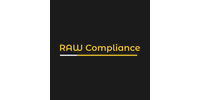Dark Activity and Monitoring
Sometimes ships will go dark, meaning those signals are no longer being broadcasted or detected. That can happen inadvertently, for instance in congested waters or due to an electrical outage, but can also be an indicator that the vessel is carrying out some kind of illicit activity and need their movements to go undetected.
With around 90% of global trade believed to involve seaborne transportation, OFAC says it is "critical" firms increase the level of due diligence carried out across their entire maritime supply chains to minimise the risk of exposure to illicit activity. However Trade Finance alone generates vast numbers of documents that need to be scanned, investigated and screened for potential red flags.
But getting the information such as vessel ownership, vessel movement and previous instances of suspicious ship activity out of these documents requires sophisticated software and technology, and as pressure increases to monitor and scrutinise the behaviour of individual ships themselves, Financial Institutions (FI's) and other Trade related parties have turned to FinTech solutions.
OFAC
The US' Office of Foreign Assets Control (OFAC) sanctions advisory from March 2019 regarding North Korea illustrated how transhipment can conceal the origin or destination of petroleum, coal and other materials – "especially at night or in areas determined to be high-risk for sanctions evasion or other illicit activity". Then in May 2020 a long-awaited advisory from OFAC on deceptive shipping practices changed the rules of the game for maritime trade.
OFAC identifies several activities that could be indicative of illicit activity, such as:
- ship-to-ship transfers – where cargo is moved from one vessel to another at sea, a technique it says is "frequently used to evade sanctions"
- voyage irregularities, tampering with vessel identification measures, and
- manipulating location transmissions.
In addition to the above we also need to consider matters such as multiple flag usage and identifying sanctioned owners in complex networks. As such our monitoring needs to be utilising the best shipping data available for the identification of ship movement, ownership, registration and location.
What can we do?
The requirements are clear - we are expected to go beyond simply checking that vessels or their owners are not on sanction registers, and remain vigilant and proactive to keep pace – but it's not an easy task.
The questions we now ask are:
- Whether existing systems and screening we are using provides the level of detail we need?
- How well do we understand ship's movements, its history, trading patterns and reporting, and identify potential ship-to-ship transfers in high risk locations?
- Is tracking vessels enough?
- How are we conducting due diligence on our clients and who they do business with?
- How are we reviewing shipping documentation?
Join us and our esteemed group of speakers from across the industry and vendors, as we discuss these challenges and more.


